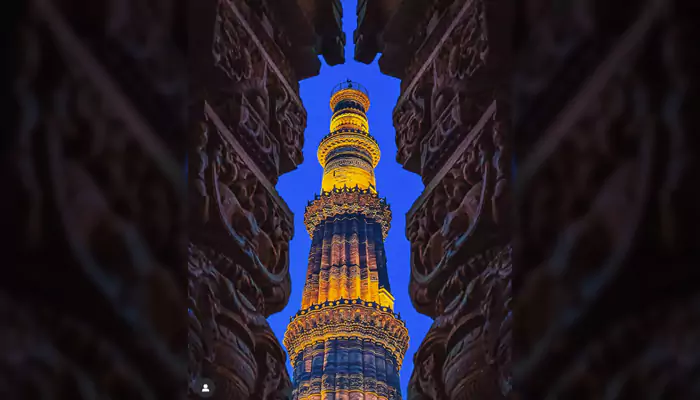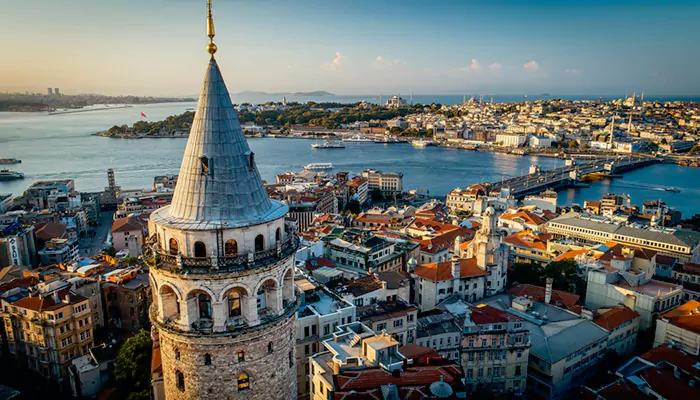
Have you ever walked into a metro station and felt like you were stepping into an art gallery? Some metro stations around the world are more than just transit points; they are architectural marvels that leave travelers in awe. Let’s go on a journey through some of the most beautiful metro stations globally, where functionality meets artistic grandeur.
Toledo Metro Station, Naples, Italy
Naples' Toledo Metro Station is a mesmerizing blend of art and functionality. Designed by Catalan architect Oscar Tusquets Blanca, the station is famed for its stunning blue mosaics that create an underwater illusion. As you descend into the station, the walls transform into a dazzling array of blue hues, evoking the feeling of being submerged in the Mediterranean Sea. The station’s design seamlessly integrates light and colour, making it a must-see for art enthusiasts and commuters alike.
Westfriedhof Station, Munich, Germany
Westfriedhof Station in Munich is a masterpiece of lighting design. The station features 11 enormous lamps, each six meters in diameter, casting a surreal, multicoloured glow over the platform. These lamps create a unique atmosphere that transforms the mundane task of waiting for a train into an ethereal experience. The striking contrast of the coloured lights against the dark, cavernous station walls makes Westfriedhof a visual delight.
Santiago Bernabéu Station, Madrid, Spain
Named after the famous football stadium, Santiago Bernabéu Station in Madrid is not just a stop for sports fans but also a showcase of modern design. The station’s sleek, futuristic appearance features clean lines, reflective surfaces, and a spacious layout. It’s an example of how contemporary architecture can enhance public transportation, making daily commutes a visually pleasing experience.
Arts et Métiers Station, Paris, France
Stepping into Arts et Métiers Station in Paris feels like entering a Jules Verne novel. Designed by Belgian artist François Schuiten, the station is adorned with copper walls, portholes, and gears, reminiscent of a submarine or a steampunk fantasy. The unique design elements pay homage to the nearby Musée des Arts et Métiers, making it a fascinating stop for those interested in science and industrial history.
Zoloti Vorota Station, Kyiv, Ukraine
Zoloti Vorota Station in Kyiv is a stunning example of Byzantine-inspired architecture. The station’s design includes elaborate mosaics, marble pillars, and golden accents, creating a regal atmosphere. Each element of the station's decor pays tribute to Ukraine's rich cultural heritage, making it a visually arresting experience for passengers.
Grand Central Terminal, New York, USA
Though primarily a train station, Grand Central Terminal in New York City deserves mention for its breathtaking beauty. The main concourse's celestial ceiling mural, grand arches, and iconic clock make it a marvel of Beaux-Arts architecture. The terminal's elegant design and historical significance attract millions of visitors each year, making it a quintessential part of New York’s urban landscape.
Westminster Station, London, UK
Westminster Station in London stands out for its sleek, modern design and strategic location near iconic landmarks like the Houses of Parliament and Big Ben. The station’s steel and glass structure provides a striking contrast to the historic surroundings, while its open, airy spaces enhance the overall travel experience.
Formosa Boulevard Station, Kaohsiung, Taiwan
Formosa Boulevard Station in Kaohsiung is renowned for its “Dome of Light,” the largest glass work in the world. Designed by Italian artist Narcissus Quagliata, the dome covers an area of 2,180 square meters and features vibrant, colourful depictions of human life and the cosmos. The stunning artwork transforms the station into a luminous spectacle, making it a popular attraction for both locals and tourists.
Olaias Station, Lisbon, Portugal
Olaias Station in Lisbon is a celebration of modernist design. With its bold colours, geometric patterns, and intricate tile work, the station stands as a testament to Portugal’s rich tradition of decorative arts. The striking visuals make Olaias a memorable stop for those who appreciate contemporary art and architecture.
Next time you find yourself in one of these cities, take a moment to appreciate the beauty and artistry of these metro stations. They remind us that even in the most utilitarian spaces, there can be room for creativity and wonder.








.webp)



